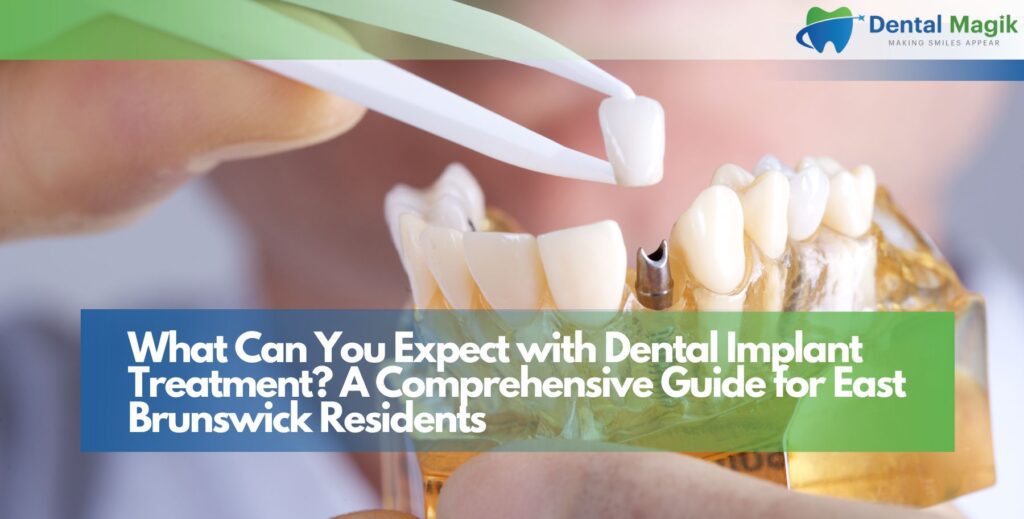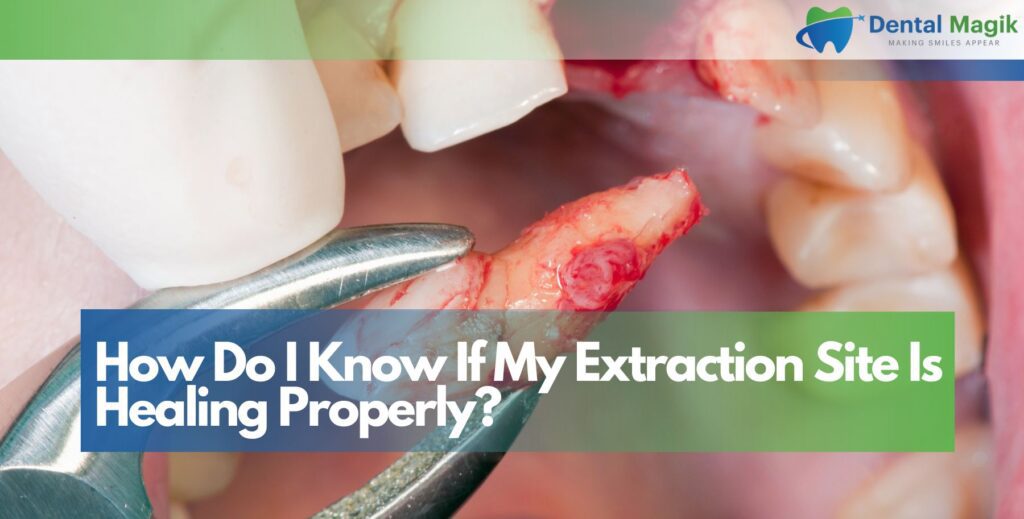Dental implants have revolutionized modern dentistry, offering patients a permanent solution to missing teeth that looks, feels, and functions just like natural teeth. If you’re considering dental implant treatment, understanding the entire process from consultation to recovery is essential for making informed decisions about your oral health. This comprehensive guide walks you through every aspect of implant dentistry, helping you set realistic expectations and prepare for your journey toward a restored smile.
Understanding Dental Implants and Their Benefits
Dental implants are titanium posts surgically placed into the jawbone to replace the roots of missing teeth. Unlike traditional dentures or bridges, implants provide a stable foundation that integrates with your bone through a process called osseointegration. This fusion creates a strong, permanent anchor for replacement teeth that can last a lifetime with proper care.
The benefits of dental implants extend far beyond aesthetics. They help preserve facial structure, prevent bone loss, improve chewing function, and enhance speech clarity. Unlike removable dentures, implants eliminate the embarrassment of slipping teeth and the dietary restrictions that come with less stable solutions. For many patients, implants represent a return to normal life and renewed confidence in their smile.
Success rates for dental implants exceed 95%, making them one of the most predictable procedures in dentistry. The combination of advanced technology, refined techniques, and biocompatible materials has made implant treatment accessible to more patients than ever before.
The Initial Consultation Process
Your initial consultation is the foundation of successful dental implant treatment in east brunswick. During this crucial appointment, your dentist will evaluate your oral health, discuss your goals, and create a personalized treatment plan. Advanced imaging technology and thorough examinations ensure that every aspect of your case is carefully considered before proceeding with implant surgery.
Comprehensive Examination and Assessment
Your dental implant journey begins with a thorough consultation where your dentist evaluates your oral health, medical history, and specific needs. During this appointment, expect detailed discussions about your goals, concerns, and expectations for treatment. The dentist will examine your mouth, assess your gum health, and determine if you have sufficient bone density to support implants.
Digital imaging plays a crucial role in treatment planning. 3D CT scans provide detailed views of your jawbone structure, nerve locations, and sinus cavities, allowing for precise implant placement. These advanced imaging techniques help identify potential complications before they occur and ensure optimal positioning for both function and aesthetics.
Your dentist will also review your medical history carefully, as certain conditions like uncontrolled diabetes, heavy smoking, or recent radiation therapy may affect healing and implant success. Don’t worry if you have health concerns – many conditions can be managed effectively with proper planning and coordination with your physician.
Treatment Planning and Timeline Discussion
Based on your examination results, your dentist will create a customized treatment plan outlining the entire process. This plan includes the number of implants needed, any preparatory procedures, estimated timeline, and associated costs. Treatment planning is collaborative, and you’ll have opportunities to ask questions and discuss alternatives.
The timeline for dental implant treatment varies significantly based on individual circumstances. Simple cases involving single implants in healthy patients may take 3-6 months, while complex cases requiring bone grafting or multiple implants could extend 12-18 months. Understanding your specific timeline helps you plan accordingly and set realistic expectations.
Pre-Treatment Preparations
Proper preparation is essential for implant success and involves addressing any underlying oral health issues before surgery. This phase may include bone grafting, tooth extractions, or medical clearances to optimize conditions for implant placement. Thorough preparation significantly improves success rates and ensures the best possible outcomes for your dental implant treatment.
Bone Grafting and Site Preparation
Many patients require preparatory procedures before implant placement. Bone grafting is commonly needed when the jawbone lacks sufficient volume or density to support an implant. This procedure involves adding bone material to deficient areas, allowing new bone growth over 3-6 months before implant placement.
Sinus lift procedures may be necessary for upper jaw implants when the sinus cavity is too close to the implant site. These procedures, while adding time to treatment, significantly improve long-term success rates and ensure optimal implant positioning.
Tooth extractions, if needed, are typically performed well in advance of implant placement to allow proper healing. However, in some cases, immediate implant placement following extraction is possible, potentially reducing overall treatment time.
Medical Clearances and Medications
Your dentist may require medical clearances from your physician, especially if you have heart conditions, diabetes, or take blood-thinning medications. These clearances ensure your safety during surgical procedures and help prevent complications.
Pre-surgical instructions typically include guidelines about eating, drinking, and medications before surgery. You may need to discontinue certain supplements or medications temporarily, and your dentist will provide detailed instructions tailored to your specific situation.
The Implant Placement Procedure
Implant placement surgery is a precise, controlled procedure typically performed in your dentist’s office under local anesthesia. Using advanced surgical techniques and computer-guided technology, your surgeon will place the titanium implant with exceptional accuracy. Most patients find the procedure more comfortable than anticipated, with minimal discomfort during and after surgery.
Surgical Process and Techniques
Implant surgery is typically performed under local anesthesia in your dentist’s office, though sedation options are available for anxious patients. The procedure begins with creating a small incision in the gum tissue to access the underlying bone. Using specialized instruments, your surgeon creates a precisely sized hole in the jawbone to accommodate the implant.
The titanium implant is then carefully placed into the prepared site at the exact depth and angle determined during treatment planning. The implant surface features special textures and coatings that promote bone integration. Once positioned correctly, the gum tissue is repositioned and sutured closed, leaving the implant to heal beneath the surface.
Computer-guided surgery is increasingly common, using 3D treatment planning to create surgical guides that ensure precise implant placement. This technology improves accuracy, reduces surgery time, and often leads to more comfortable post-operative experiences.
Immediate Post-Surgical Care
Immediately following implant placement, you’ll receive detailed post-operative instructions covering pain management, oral hygiene, diet restrictions, and activity limitations. Pain and swelling are normal and typically peak 2-3 days after surgery before gradually subsiding.
Ice application during the first 24 hours helps minimize swelling, while prescribed or over-the-counter pain medications manage discomfort effectively. Most patients find that discomfort is less severe than they anticipated, often comparing it to having a tooth extracted.
Diet modifications are important during initial healing. Stick to soft foods and avoid the surgical site when chewing. Oral hygiene must be maintained carefully, following your dentist’s specific instructions for cleaning around the surgical area without disrupting healing.
The Healing and Integration Period
Healing and osseointegration represent the most critical phase of implant treatment, where your jawbone fuses with the titanium implant over 3-6 months. During this period, following post-operative instructions and attending follow-up appointments ensures optimal healing. Patience during recovery is essential, as this biological process creates the strong foundation necessary for long-term implant success.
Osseointegration Process
Osseointegration is the biological process where your jawbone grows around and fuses with the implant surface. This integration typically takes 3-6 months, though some patients may require longer healing periods. During this time, the implant becomes increasingly stable and capable of supporting chewing forces.
Regular follow-up appointments monitor healing progress and ensure proper integration. Your dentist will check for signs of complications and may take X-rays to assess bone growth around the implant. These appointments are crucial for identifying and addressing any issues early.
Temporary teeth or healing abutments may be placed during the integration period, depending on your specific situation and aesthetic needs. These provisional solutions help maintain function and appearance while your implants heal.
What to Expect During Recovery
Recovery experiences vary among patients, but most people return to normal activities within a few days of surgery. Swelling and bruising typically resolve within a week, and any dietary restrictions gradually lift as healing progresses.
Activity restrictions during the first week include avoiding vigorous exercise, heavy lifting, and smoking, all of which can interfere with healing. Smoking cessation is particularly important, as tobacco use significantly increases the risk of implant failure.
Oral hygiene remains critical throughout the healing period. Your dentist will provide specific instructions for cleaning around implants and may recommend special rinses or devices to maintain optimal oral health.
Crown Placement and Final Restoration
Crown placement marks the exciting completion of your dental implant journey, transforming your implant into a fully functional tooth. Custom-crafted crowns are designed to match your natural teeth perfectly in both appearance and function. This final phase requires precise fitting and bite adjustment to ensure comfortable chewing and a beautiful, natural-looking smile that lasts for years.
Creating Your Custom Crown
Once osseointegration is complete, the process of creating your final restoration begins. This involves taking impressions or digital scans of your mouth to fabricate a custom crown that matches your natural teeth perfectly. Modern dental laboratories use advanced materials and techniques to create restorations that are virtually indistinguishable from natural teeth.
Color matching is a crucial aspect of crown fabrication. Your dentist will carefully select the shade and characteristics that best blend with your existing teeth, ensuring a seamless and natural appearance. Porcelain crowns are most common due to their durability and aesthetic properties.
The crown fabrication process typically takes 2-3 weeks, during which you may wear a temporary restoration. Multiple try-ins may be necessary to achieve the perfect fit, function, and appearance before final cementation.
Final Crown Attachment
Crown placement is typically a comfortable procedure requiring minimal anesthesia. The crown is secured to the implant using a small screw or cement, depending on the specific implant system used. Your dentist will check your bite alignment and make any necessary adjustments to ensure proper function.
Final adjustments may include slight modifications to the crown shape or bite relationship. These refinements ensure comfortable chewing and prevent excessive forces on the implant. Your dentist will also provide instructions for caring for your new implant-supported restoration.
Long-Term Care and Maintenance
Proper maintenance is crucial for ensuring your dental implants remain healthy and functional for decades. Daily oral hygiene, regular dental visits, and avoiding harmful habits protect your investment and prevent complications. With consistent care and professional monitoring, your dental implants can provide a lifetime of confident smiles and comfortable chewing function.
Daily Oral Hygiene Routine
Implant maintenance requires the same commitment to oral hygiene as natural teeth, with some additional considerations. Daily brushing and flossing are essential, though you may need specialized tools like interdental brushes or water flossers to clean effectively around implants.
Regular dental cleanings and examinations are crucial for long-term implant success. Your dental hygienist will use special instruments designed for implant cleaning that won’t scratch or damage the implant surface. Professional monitoring helps detect potential issues before they become serious problems.
Avoiding harmful habits like teeth grinding, ice chewing, or using teeth as tools helps protect your investment. If you grind your teeth at night, a custom night guard may be recommended to protect both implants and natural teeth from excessive forces.
Signs to Watch For
Understanding warning signs of potential implant problems helps ensure prompt treatment if issues arise. Persistent pain, swelling, bleeding, or mobility of the implant or crown should be reported to your dentist immediately. Early intervention often resolves problems before they become serious.
Gum recession around implants can occur over time and may require treatment to maintain both health and aesthetics. Regular monitoring during preventive visits helps identify these changes early when they’re most treatable.
Managing Expectations and Timeline
Realistic expectations are essential for treatment satisfaction. While dental implants offer excellent long-term solutions, the process requires patience and commitment. Understanding that healing takes time and that multiple appointments are necessary helps patients prepare mentally and practically for treatment.
Individual healing rates vary based on factors like age, general health, bone quality, and adherence to post-operative instructions. Some patients heal quickly and progress ahead of schedule, while others may require additional time for optimal integration.
Communication with your dental team throughout treatment ensures that concerns are addressed promptly and that you remain informed about your progress. Don’t hesitate to ask questions or express concerns – your comfort and understanding are priorities.
Conclusion
Dental implant treatment represents a significant investment in your oral health and quality of life. By understanding the comprehensive process from consultation through long-term maintenance, you can make informed decisions and set appropriate expectations for your treatment journey. The combination of advanced technology, refined techniques, and experienced practitioners makes implant dentistry more predictable and successful than ever before.
For residents seeking dental implant treatment in East Brunswick, choosing an experienced Dentist in East Brunswick, NJ ensures access to the latest techniques and personalized care throughout your treatment journey.
Frequently Asked Questions (FAQs)
How long does the entire dental implant process take?
The complete dental implant process typically takes 3-6 months for simple cases, though complex situations requiring bone grafting may extend the timeline to 12-18 months. Healing time varies based on individual factors and the number of implants placed.
Is dental implant surgery painful?
Implant surgery is performed under local anesthesia, so you shouldn’t feel pain during the procedure. Post-operative discomfort is generally manageable with prescribed medications and typically resolves within a few days to a week.
What is the success rate of dental implants?
Dental implants have a success rate exceeding 95% when placed by experienced practitioners in suitable candidates. Long-term success depends on factors like oral hygiene, overall health, and regular dental care.
Can anyone get dental implants?
Most adults with good general health and adequate bone density are candidates for dental implants. However, certain conditions like uncontrolled diabetes, heavy smoking, or recent radiation therapy may affect candidacy and require special considerations.
How do I care for dental implants?
Implant care involves regular brushing, flossing, and professional cleanings, similar to natural teeth. Specialized cleaning tools may be recommended, and avoiding harmful habits like teeth grinding helps ensure long-term success.
What happens if a dental implant fails?
Implant failure is uncommon but can occur due to infection, inadequate healing, or excessive forces. Failed implants can often be removed and replaced after appropriate healing time, though success depends on the specific circumstances.
Are dental implants covered by insurance?
Insurance coverage for dental implants varies widely among plans. Many plans provide partial coverage, particularly when implants are deemed medically necessary. It’s important to verify your specific benefits and coverage limitations before beginning treatment.
How long do dental implants last?
With proper care and maintenance, dental implants can last a lifetime. The crown restoration may need replacement after 10-15 years due to normal wear, but the implant itself typically remains stable indefinitely with good oral hygiene.







